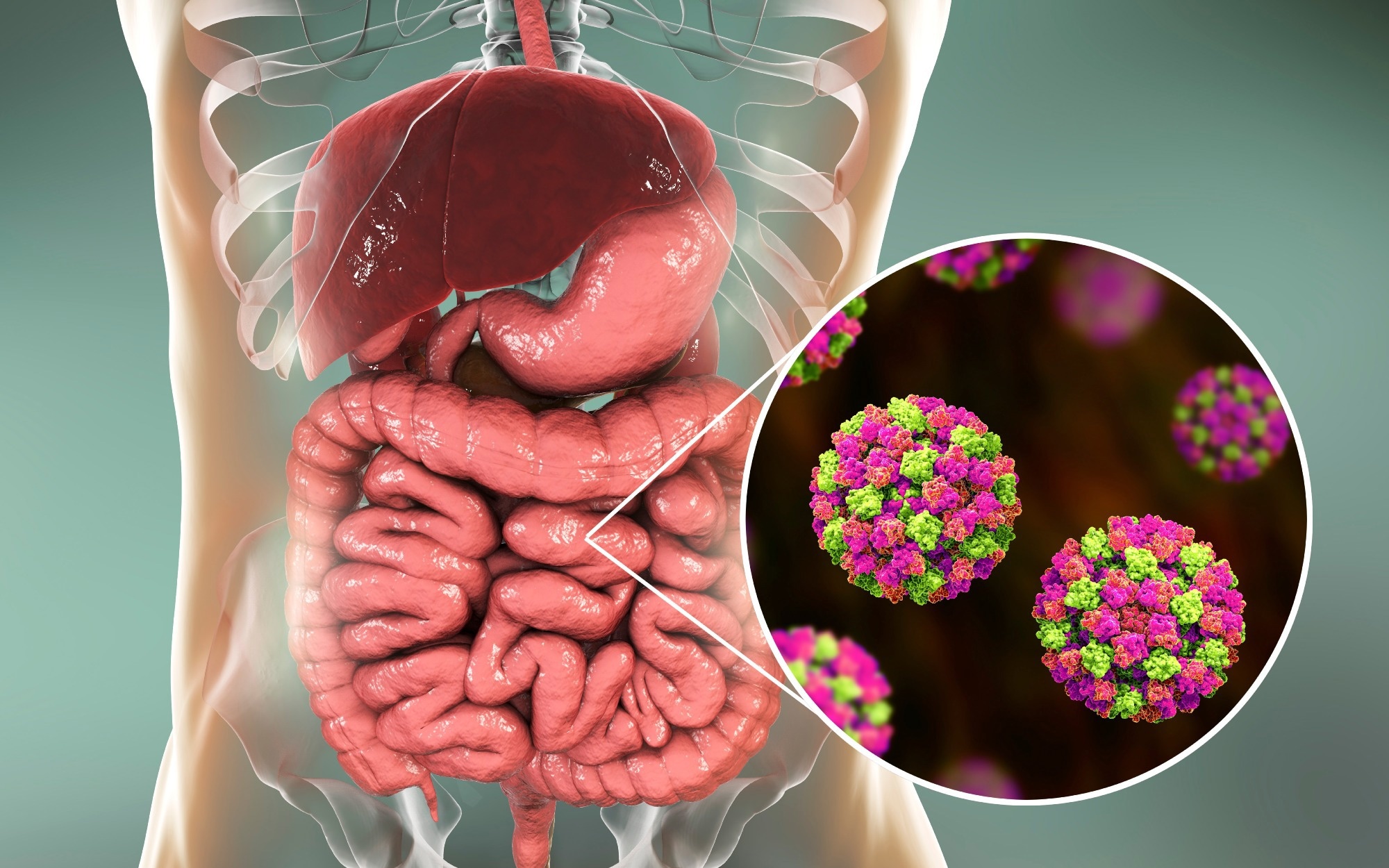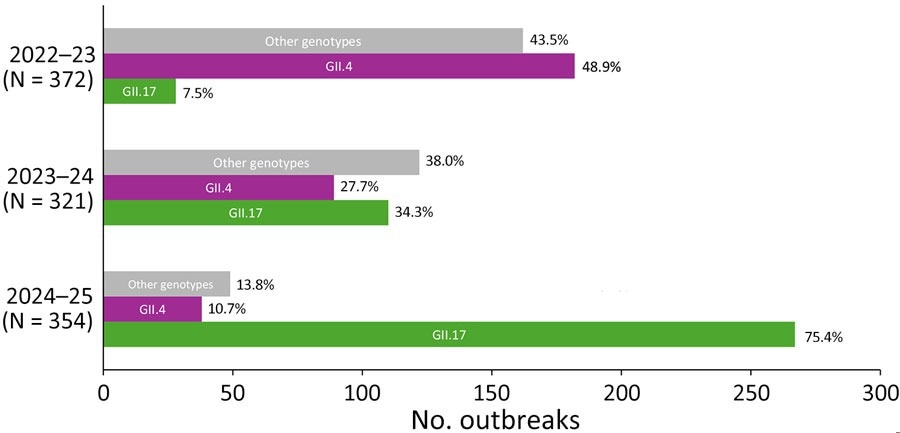A new norovirus strain is sweeping the US, dethroning the long-standing leader and reshaping the landscape of gastroenteritis outbreaks. Will GII.17 remain on top, or could another variant emerge next?
 Research: Increasing Predominance of Norovirus GII.17 over GII.4, United States, 2022–2025. Image Credit: Kateryna Kon / Shutterstock
Research: Increasing Predominance of Norovirus GII.17 over GII.4, United States, 2022–2025. Image Credit: Kateryna Kon / Shutterstock
A recent study published in the journal Emerging Infectious Diseases reported rising predominance of norovirus GII.17 in the United States (US). Norovirus remains the leading cause of gastroenteritis in the United States. Noroviruses are genetically stratified into 10 genogroups (GI to GX) and further into 48 genotypes and 60 P-types.
GI and GII genogroup viruses are responsible for the most outbreaks. Between 2011 and 2024, GII.4 viruses accounted for over half of outbreaks in the US in each season (September to August). In 2014, several Asian countries found that a GII.17 strain had completely replaced the GII.4 Sydney strain, and it was also detected in the US and Europe.
Nevertheless, GII.4 viruses rebounded in 2016, regaining their global predominance. The likely ancestor of the current GII.17 virus is a strain that caused an outbreak in Romania in 2021. However, during the 2023-24 season, several countries recorded increased GII.17 outbreaks and cases.
The study and findings
In the present study, researchers analyzed the increase in GII.17 outbreaks since 2022. First, they examined the genotype distribution of outbreaks between September 2022 and April 2025 using CaliciNet, the norovirus outbreak surveillance network of public health laboratories in the United States, which serves as a valuable early warning system for emerging strains. Genotypes were categorized into three groups: GII.4 (including GII.4 Wichita, GII.4 Sydney, and GII.4 San Francisco), GII.17, and all other genotypes.
In the 2022-23 season, GII.4 and GII.17 accounted for 48.9% and 7.5% of outbreaks, respectively. In 2023-24, GII.17 caused 34.3% of all outbreaks, while GII.4 outbreaks accounted for 27.7%. Moreover, by the 2024-25 season (data up to April 2025), GII.17 accounted for 75.4% of outbreaks so far, whereas GII.4 outbreaks accounted for 10.7%.

Increase in outbreaks of norovirus GII.17 over GII.4, United States, 2022–2025. Seasons are defined as September 1 of one year to August 31 of the next. The 2024–25 season is truncated to September 2024–April 2025. Other genotypes: GI.1, GI.2, GI.3, GI.4, GI.5, GI.5, GI.6, GI.7, GII.1, GII.2, GII.3, GII.6, GII.7, GII.8, GII.10, GII.12, GII.13, GII.14, GII.21, GII.27, and GIX.1.
Peak norovirus activity was observed in February, March, and January, in 2022-23, 2023-24, and 2024-25 seasons, respectively. GII.17 outbreaks overtook GII.4 outbreaks in April 2024, and GII.17 accounted for more than 50% of outbreaks each month from May 2024 to March 2025. The distribution of GII.17 and GII.4 outbreaks showed no regional differences. During September-December, GII.17 accounted for 13.4%, 17.1%, and 46.3% of all outbreaks in the 2022-23, 2023-24, and 2024-25 seasons, respectively.
Conclusions
The data indicate a considerable shift in the norovirus outbreak genotype distribution in the US between 2022 and 2025, with the emergence of GII.17 as the predominant genotype. This shift coincided with a decline in GII.4, which had traditionally been the leading cause of outbreaks in the US. Norovirus season usually starts in December in the US. However, during the 2024-25 season, it began in early October. During the 2023-24 season, a protracted outbreak occurred, with cases observed even in the summer, likely due to the sustained circulation of GII.17.
Meanwhile, the 2022-23 and 2024-25 seasons followed a more typical pattern with cases declining in the spring months. With the decline in GII.4 outbreaks, whether GII.17 will continue to cause an earlier onset of the norovirus season remains unclear. In summary, GII.17 accounted for 75% of all outbreaks in the 2024-25 season so far, replacing GII.4 as the predominant strain in the United States.
Further genomic analyses of GII.17 and identification of neutralizing antibodies against GII.17 could help determine whether the GII.17 strain will persist. In addition, continued surveillance of norovirus is necessary to determine whether GII.17 will remain the predominant strain.